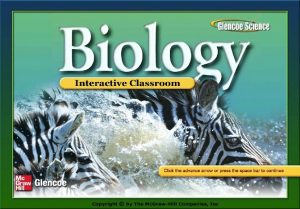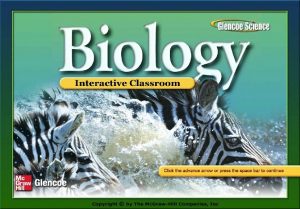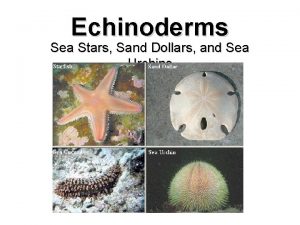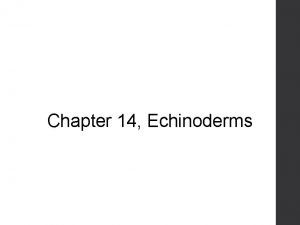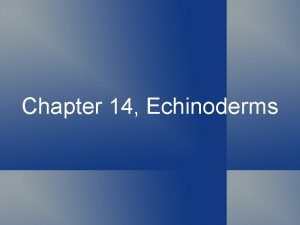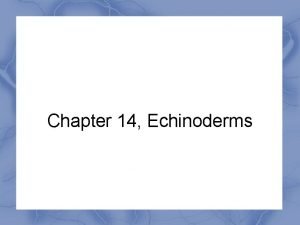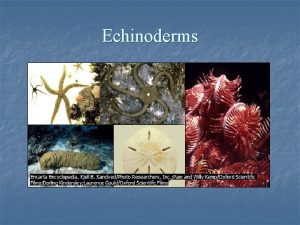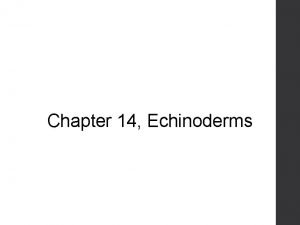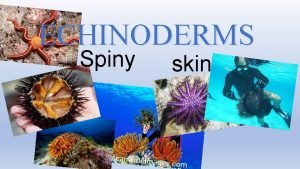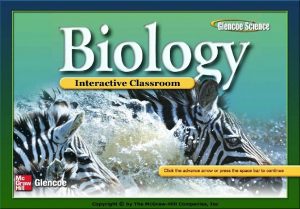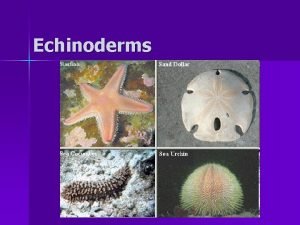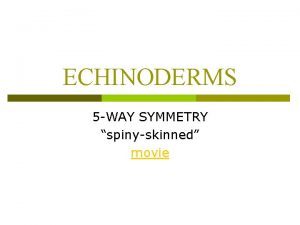Chapter 13 4 Echinoderms Echinoderm Characteristics Echinoderms are








- Slides: 8

Chapter 13. 4 Echinoderms

Echinoderm Characteristics Echinoderms are found in oceans all over the world. They have a hard endoskeleton with thin, bumpy, or spiny epidermis (skin). They are radially symmetrical. Echinoderms have a mouth, stomach, and intestines. They feed on plants and animals. They do not have a head or brain. Instead they have a nerve ring.

Water-Vascular System The water-vascular system allows an echinoderm to move, exchange carbon dioxide and oxygen, capture food, and release wastes. The water-vascular system is a set of water-filled canals with many tube feet attached to it. Tube feet are hollow, thin-walled tubes that have a suction cup on the bottom. As water pressure changes it allows it to control the suction on the tube feet.

Types of Echinoderms There are 6, 000 species of echinoderms, 1/3 of those are sea stars. There also brittle stars, sea urchins, sand dollars, and sea cucumbers.

Sea Stars Sea stars are echinoderms that have at least five arms arranged around a central point. On the underside of the arms are thousands of tube feet that allow them to open up it’s prey (like a clam). Once the sea star has the shell open slightly it pushes it’s stomach into the shell, digests the body of its prey, and then pulls its stomach back in. Sea stars reproduce sexually. Sea stars can also regenerate. If it looses an arm, a new one will grow back.

Brittle Stars Brittle stars have fragile, slender, branched arms that break off easily. This helps a brittle star survive an attack. It can lose an arm, that distracts the predator while the brittle star gets away. They can regenerate lost arms. They live under rocks. They use their arms form movement. Their tube feet is used for moving food into their mouth.

Sea Urchin and Sand Dollars These animals are disk or globeshaped covered in spines. They do not have arms. Sand dollars have fine, hairlike, spines. Sea urchins have long, pointy spines. The spines help with movement and burrowing.

Sea Cucumbers Sea cucumbers have soft-bodies that have a leathery covering. They have tentacles around their mouth and rows of tube feet on their upper and lower surfaces. When threatened they have release their internal structures. They can then regenerate them after a little while.

